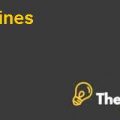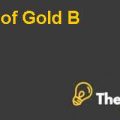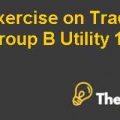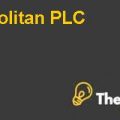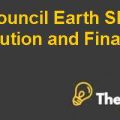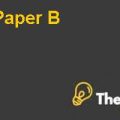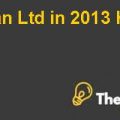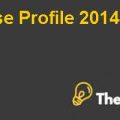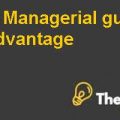
STATEMENT OF THE PROBLEM
The management of Sterling Household Products Company had received a new growth opportunity in the year 2013 and the management of the company was now considering this new opportunity. Sterling Household Products Company specialized in the production and the sale of the consumer goods including sanitizing, disinfecting, cosmetics for cleaning and laundry soap products. Over the years, the company has been reporting impressive profits and is regarded as one of the most reputable companies by the entire community as it had one of the high brand name in the market.
However, despite huge growth and success over the years, most recently the growth in the sales volume, sales units, profits and sales revenues had been low for the company. Now in order to sustain the growth of the company, Sterling Household Products is looking ahead to enter into new markets In order to increase its revenues rapidly. One of the significant opportunities that is now being considered by the management of the company is to acquire the sanitation, germicidal and antiseptic product unit belonging to the Montagne Medical Instruments.
This company specialized in the health care industry. By acquiring this division, Sterling Household Products Company could easily extend its expertise and experience in the health care field. Both of the parties agree to the terms of the purchase agreement and a purchase price of $265 million is decided, however, the management of Sterling Household Products Company needs now decide that whether this investment opportunity is going to be value additive in quantitative and qualitative ways for the company given the risks involved.
DISCUSSION
First of all, in order to perform the valuation of the Montagne Health Care Unit and the follow-up expansion opportunity, a range of calculations have been performed regarding the cost of equity, weighted average cost of capital, capital expenditure investments and incremental working capital.
Cost of Equity & Weighted Average Cost of Capital
First of all, in order to calculate the cost of equity for the proposed investment we need to calculate the equity beta coefficient which reflects the risk of the associated investment opportunity. Since the health care division is a division in which Sterling Household Products Company does not has any expertise therefore, first of all the asset betas of comparable companies have been calculated by un-leveraging their equity betas with their respective debt/equity ratios.
One assumption made here is that all the comparable companies’ data has been sued except for the data of Vortex because it has an unusual risk portfolio and it is engaged in production of a wide variety of medical products and this might be the reason that its beta is lower as compared to all other companies.
Moreover, the average has been taken to calculate the average asset beta and based on the target capital structure of Sterling Household Products Company, the equity beta for the proposed investment has been calculated. The target capital structure is being changed which would comprise about 30% debt and 70% equity.
Based on the risk free rate of 3.1% and market risk premium of 5%, the cost of equity with equity beta of 1.04 is 8.3%. Furthermore, in order to calculate the weighted average cost of capital of the company the after tax cost of debt has been taken by deducting tax of 35% from the cost of debt of 5.1%. Based on the target capital structure, the weighted average cost of capital has been calculated which is 6.8%.
MONTAGNE HEALTH CARE UNIT VALUATION
In order to calculate the value of the Montagne Healthcare Unit, first of all the free cash flows for the unit ranging from 2013 to 2022 have been calculated based on the assumptions that have been provided in the case and the operating income forecast. First of all tax has been deducted from the operating income to calculate the net income and then depreciation has been added back. The incremental capital expenditure and the incremental working capital investment has also been deducted each year from 2013 to 2017 and then taking the assumption from the case that it is going to remain constant from 2018 to on wards.
The terminal value has been calculated for the period of the next 10 years 2022-2032 by taking the ending free cash flow figure of the year 2022 and multiplying it with a multiple of 9 as mentioned in the case. Based on these figures and a weighted average cost of capital of 6.8%, the total unit value is $372 million, which alone is much higher than the agreed purchase price. ..................

